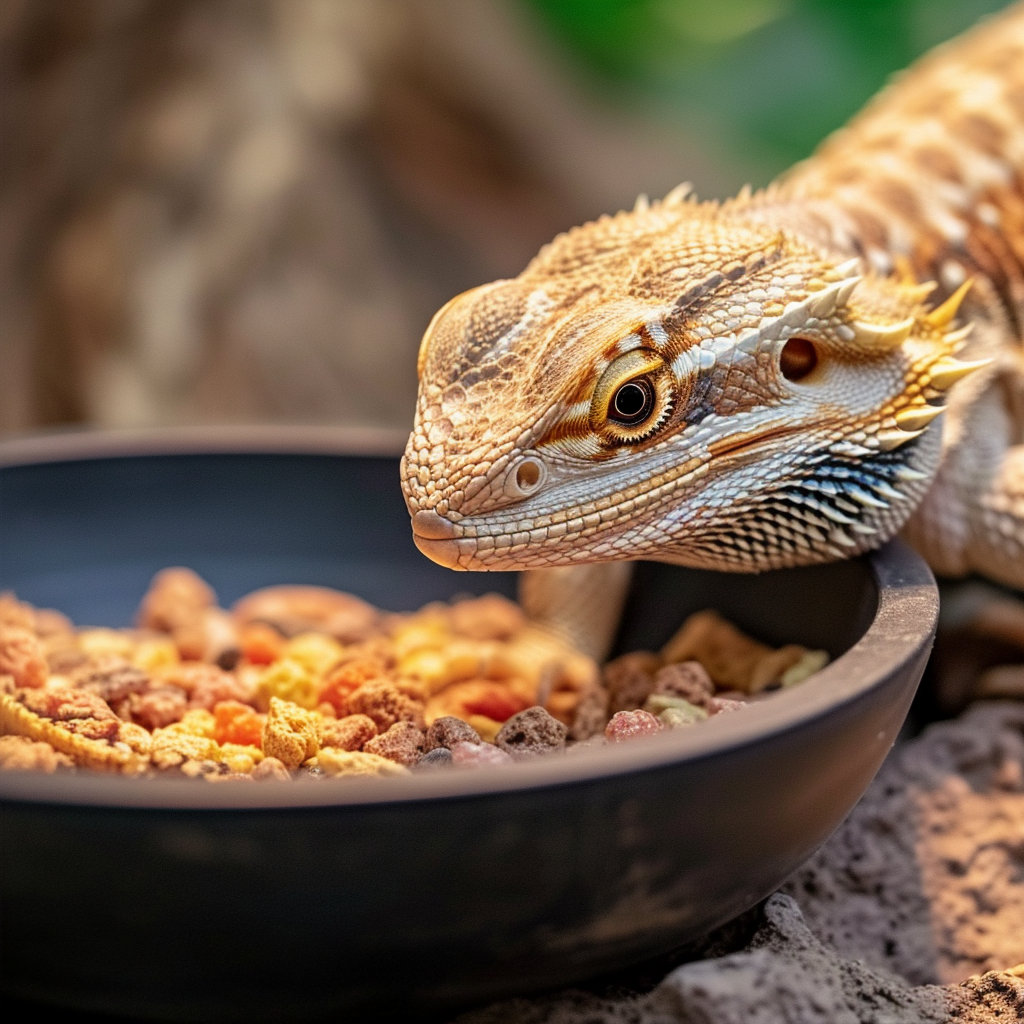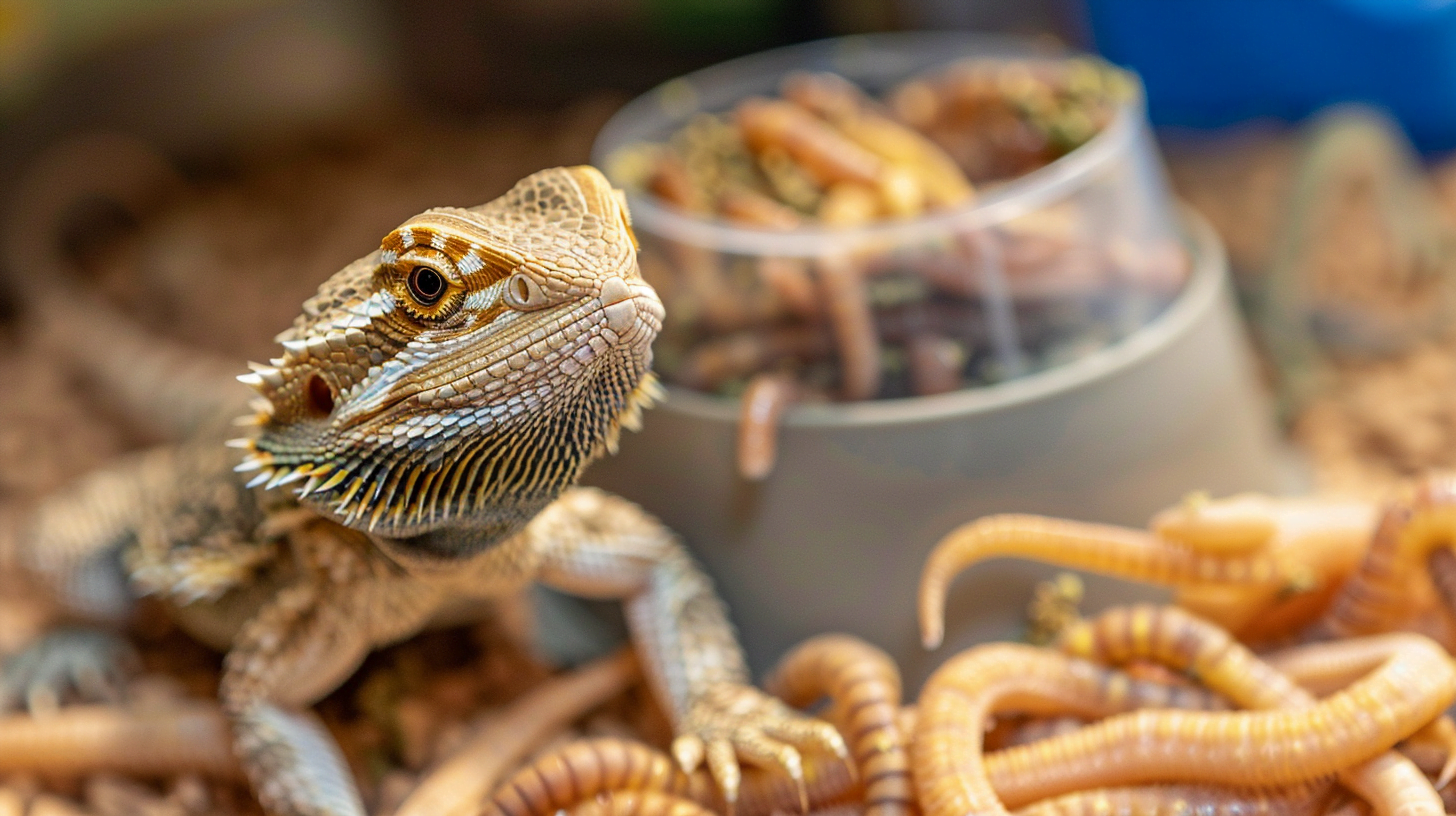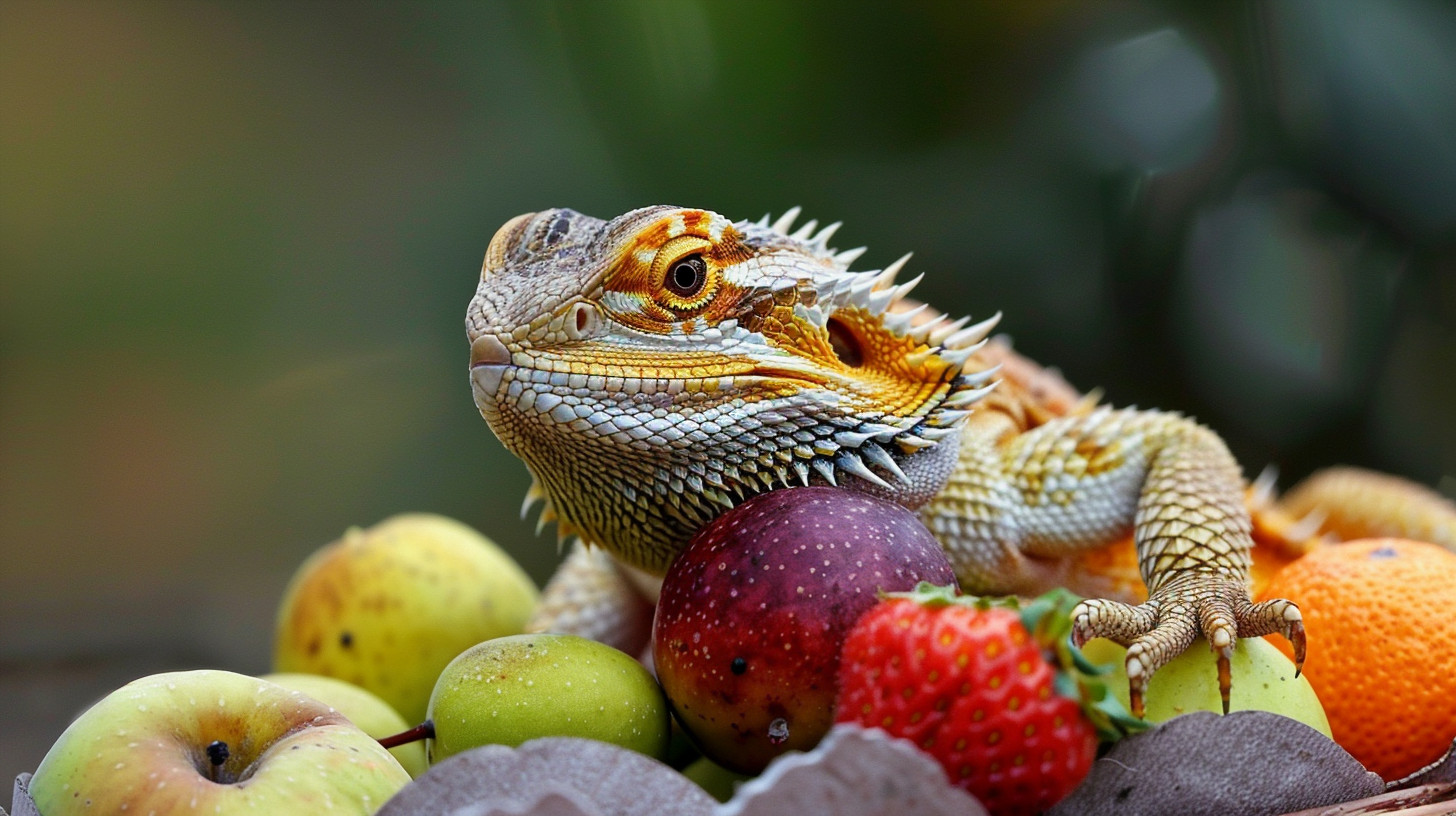Deciding how often to feed your bearded dragon is one of the most important aspects of caring for these personable reptiles. “How often should bearded dragons eat?” is a common question, because feeding frequency changes dramatically based on their age. Baby dragons need to eat several times a day. But by adulthood, they only need to eat once a day or every few days. Strike the right balance and you’ll raise a healthy, happy dragon. Give them too little food and they’ll fail to thrive. Overfeed them and obesity issues emerge.
So how do you determine the optimal feeding schedule? The goal of this guide is to examine that topic in-depth. We’ll explore how often bearded dragons need to eat based on life stage, with details on amounts and types of food. You’ll learn how frequently to provide insects vs. vegetables, signs your dragon is still hungry, and tips to meet their dietary requirements. Proper nutrition is essential for helping bearded dragons reach their full lifespan.
Whether you’re a new bearded dragon owner wondering when and what to feed your new pet, or a seasoned veteran looking to optimize your care, this extensive guide has you covered. Follow the age-specific recommendations and adjust as needed based on appetite, weight, and behavior. We’ll make sure you feel confident you’re giving your dragon exactly what they need to stay at a healthy weight and prime health! Let’s get started.
Bearded Dragon Feeding Frequency by Age
A bearded dragon’s age is the primary factor that determines how often they should be fed. Here are the recommended feeding frequencies:
- Baby bearded dragons (0-4 months): Feed 2-3 times per day. Offer 10-15 small crickets or mealworms at each feeding along with fresh chopped veggies.
- Juvenile bearded dragons (4-12 months): Feed 1-2 times per day. Provide 15-20 crickets or mealworms at each feeding as well as fresh salad.
- Adult bearded dragons (12+ months): Feed 1 time per day. Give adult dragons 20+ crickets or mealworms 2-3 times per week along with their fresh salad daily.
As you can see, the feeding frequency decreases as bearded dragons get older. This is because their metabolic rates change drastically during the first year of life.
Baby dragons are growing rapidly, so they need to eat multiple times throughout the day to fuel their development and gain weight. Their digestive systems are primed to handle eating frequent, small meals.
As juveniles, their growth starts to slow down and so does their feeding schedule. They need less frequent feedings but larger portions of bugs and greens to maintain their body weight.
Adult dragons are done growing, so they have much lower caloric needs. They only need insects a couple times a week in addition to daily salad to provide adequate nutrition. Overfeeding can lead to obesity.
Some owners wonder if bearded dragons need to eat every day, especially adults. The answer is yes, adults should be offered fresh salad daily for optimal health. However, live feeder insects can be given just 2-3 times per week.
If you ever notice your bearded dragon losing weight or acting lethargic, increase the frequency of feedings again to help them regain condition. But in general, follow the age-based feeding schedules outlined above.
Mealworms vs. Crickets – Which to Feed and How Much
The two most popular live feeder insects for bearded dragons are mealworms and crickets. Here’s a detailed comparison of these two bugs:
Mealworms
- Higher in fat than crickets
- Can lead to obesity if fed too often
- Best to feed no more than 1-2 times per week
- Provide variety from crickets
- Good to mix with veggies to increase palatability
Crickets
- Lower in fat than mealworms
- Considered a staple feeder insect
- Can be fed more regularly than mealworms
- Offer the best overall nutritional balance
- Gut load crickets to further improve nutrition
In terms of amounts, here are the recommendations for each life stage:
- Babies: Feed 10-15 small crickets or mealworms per feeding, 2-3 times a day
- Juveniles: Offer 15-20 crickets or mealworms at each feeding, 1-2 times daily
- Adults: Feed adult dragons 20+ appropriately sized crickets every 2-3 days or smaller amounts of mealworms 1-2 times weekly along with vegetables daily.
The key is variety. Rotate between crickets and mealworms so your bearded dragon benefits from the nutritional profile of each. Avoid overfeeding high-fat mealworms, especially for adult dragons who are prone to obesity.
Always properly gut load feeder insects by providing them nutritious foods like leafy greens, carrots, sweet potatoes before feeding them to your dragon. This further boosts the vitamins and minerals they receive.
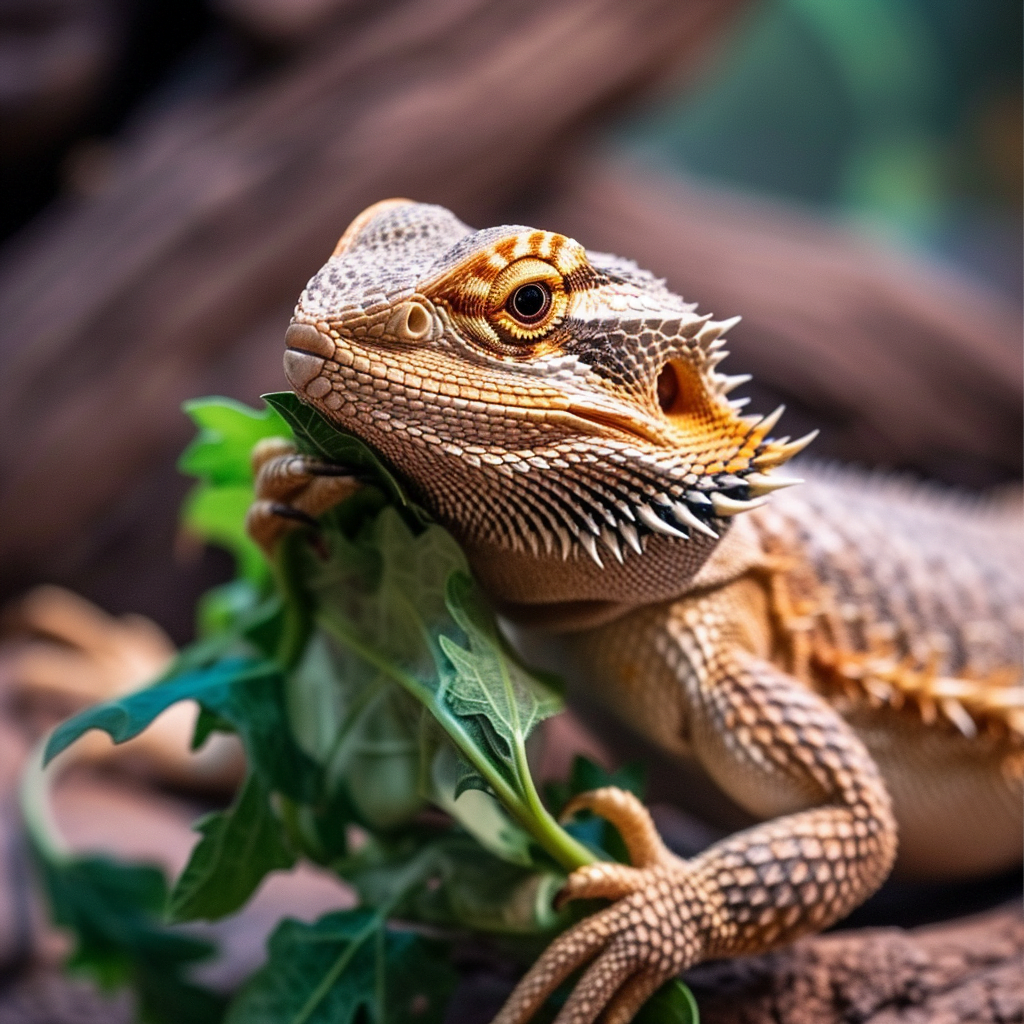
Vegetables and Fruits for Bearded Dragons
In addition to insects, bearded dragons require vegetables and some fruits to thrive. Here are the best options to offer:
Leafy Greens
- Collard greens
- Mustard greens
- Dandelion greens
- Kale
- Turnip greens
Other Vegetables
- Bell peppers
- Carrots
- Sweet potato
- Butternut squash
Fruits
- Blueberries
- Raspberries
- Mango
- Banana
Leafy greens should form the basis of their salad and be served daily. Chop greens into bite-sized pieces for easy eating. Other veggies can be mixed in for variety 2-3 times per week.
Fruits are high in sugar, so only provide them 1-2 times weekly as treats. Always rinse produce before serving. Remove any uneaten salad within 24 hours.
Having a rotating list of veggies can help provide variety and maximize nutrition. Try making a weekly schedule out of different salad recipes. Some options include:
- Monday: Collard greens, bell pepper, carrots
- Tuesday: Kale, butternut squash
- Wednesday: Mustard greens, sweet potato
- Thursday: Dandelion greens, banana slices
- Friday: Turnip greens, blueberries
- Saturday: Mix of leftovers
- Sunday: New batch of greens
Planning a salad rotation removes the guesswork of what veggies to serve each day while exposing your dragon to an assortment of healthy foods.
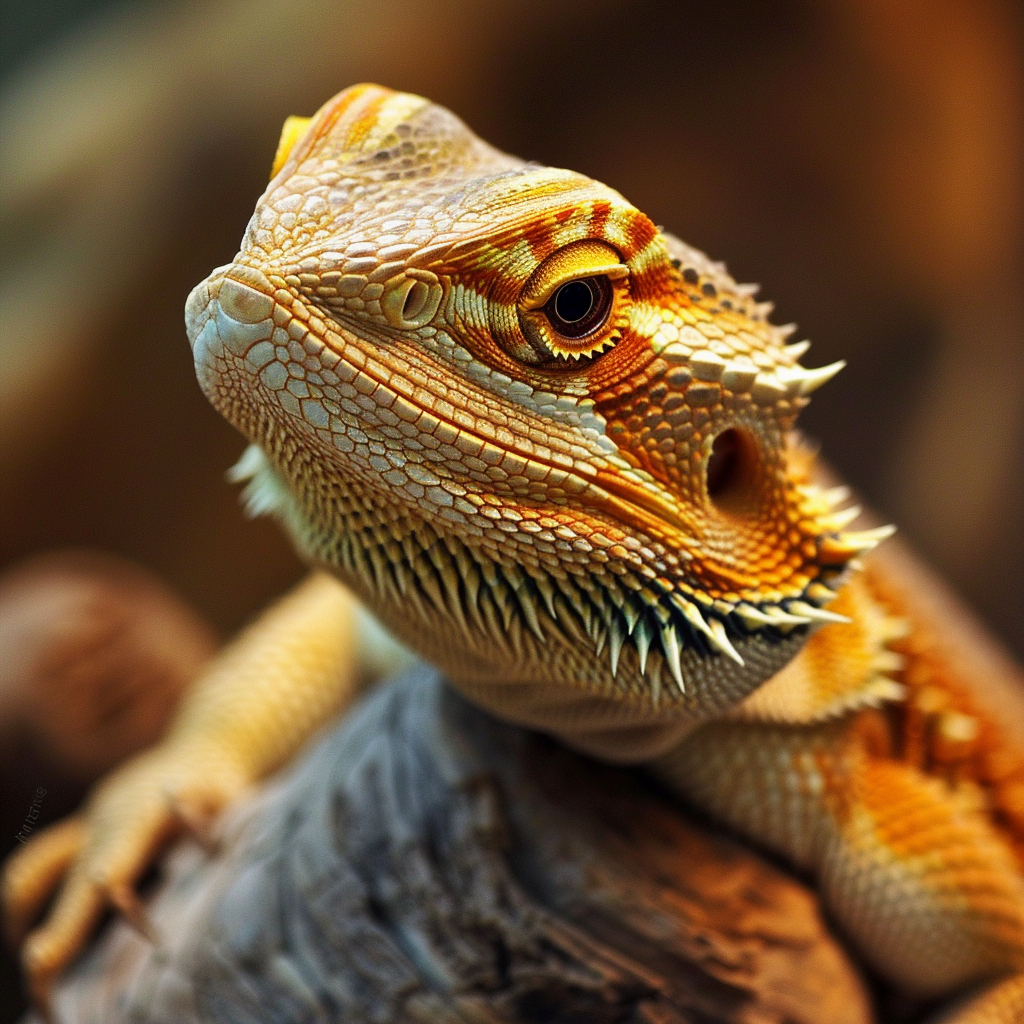
Signs Your Bearded Dragon is Still Hungry
It’s important to pay close attention to your bearded dragon’s behavior around mealtimes. Here are the most common signs that could indicate your dragon is still feeling hungry:
- Continues hunting behaviors after you have finished serving food – walking around the tank, clawing at the carpet, etc.
- Scratching or clawing at their empty feeding dish, the glass enclosure, or the door when you open it at feeding times.
- Displays aggressive behavior like gaping mouth, head bobbing, or even nipping when humans approach at feeding time.
- Eats their salad very quickly and eagerly without leaving leftovers.
- Loss of weight or failure to gain weight at expected rate.
- Lethargic, less active than normal.
If you notice any combination of these signs, try increasing portion sizes or feeding frequency. Since all dragons have unique metabolisms and activity levels, signs of hunger will be the best indicator that an adjustment is needed to provide adequate nutrition.
Also monitor the inverse and watch for signs of obesity like a thick fat pad on the neck or tail base. Decrease food for overweight dragons. Tracking weight weekly can help catch any concerning trends early.
Tips for Feeding Your Bearded Dragon
Follow these top tips for successfully feeding your bearded dragon:
- Dust live insects with calcium and vitamin D3 supplements as directed by your vet – these are crucial for bone health and growth.
- Always feed insects first before salad – this takes advantage of their natural hunting instinct before filling up on veggies.
- Serve fresh salad daily in a clean dish designated just for your dragon – improper hygiene can cause bacterial or fungal growth.
- Limit high-fat insects like mealworms for adult dragons – obesity is a problem for mature dragons who need less food.
- Time live insect feedings when your dragon is fully alert and active – this promotes their natural prey drive.
- Remove any uneaten live insects within 24 hours – they can bite your dragon if left unattended.
- Carefully monitor appetite levels and behavioral changes – increased or decreased appetite can signal an underlying issue.
- Allow juveniles and adults to fully finish their insects before providing salad.
- Never feed wild caught insects – they carry diseases and parasites harmful to bearded dragons.
- Ensure vegetables are chopped into bite-sized pieces to prevent choking hazards.
By sticking to these best practices, you can feel confident knowing your bearded dragon’s nutritional needs are fully met.
How Often Should Bearded Dragons Eat? Key Takeaways
To summarize the key points on feeding frequency for bearded dragons:
- Feed babies 2-3 times daily, juveniles 1-2 times daily
- Offer adult dragons fresh salad daily, live insects 2-3 times weekly
- Provide a varied diet of crickets, mealworms, greens, veggies, occasional fruits
- Dust insects with calcium + D3 powder as needed
- Monitor appetite, weight, and behaviors closely
- Adjust portions or frequency based on age, weight, and activity levels
- Remove uneaten food promptly
Following the proper feeding schedule while providing a nutritious, well-balanced diet is crucial for raising healthy bearded dragons. Pay close attention to each dragon’s behaviors and physical condition to ensure their unique nutritional needs are fully met throughout their life. With some attentive care and common sense, you can feel confident your bearded dragon is eating exactly what they need to thrive.
The ideal diet will support proper growth and development in babies, maintain health and body condition in juveniles, and prevent obesity in adult dragons. Adjust portions and frequency based on appetite, age, activity level and weight trends. Provide diversity in the form of leafy greens, vegetables, live insects and occasional fruits. Monitor for signs of hunger or lethargy. Remove uneaten foods promptly.
By following research-based feeding guidelines tailored to your dragon’s life stage, utilizing the signs their body gives related to hunger, and providing optimal nutrition, your bearded dragon can live a long, healthy and happy life! Use this guide to inform your feeding schedule. With a little attentive care, meeting their needs is simple.
